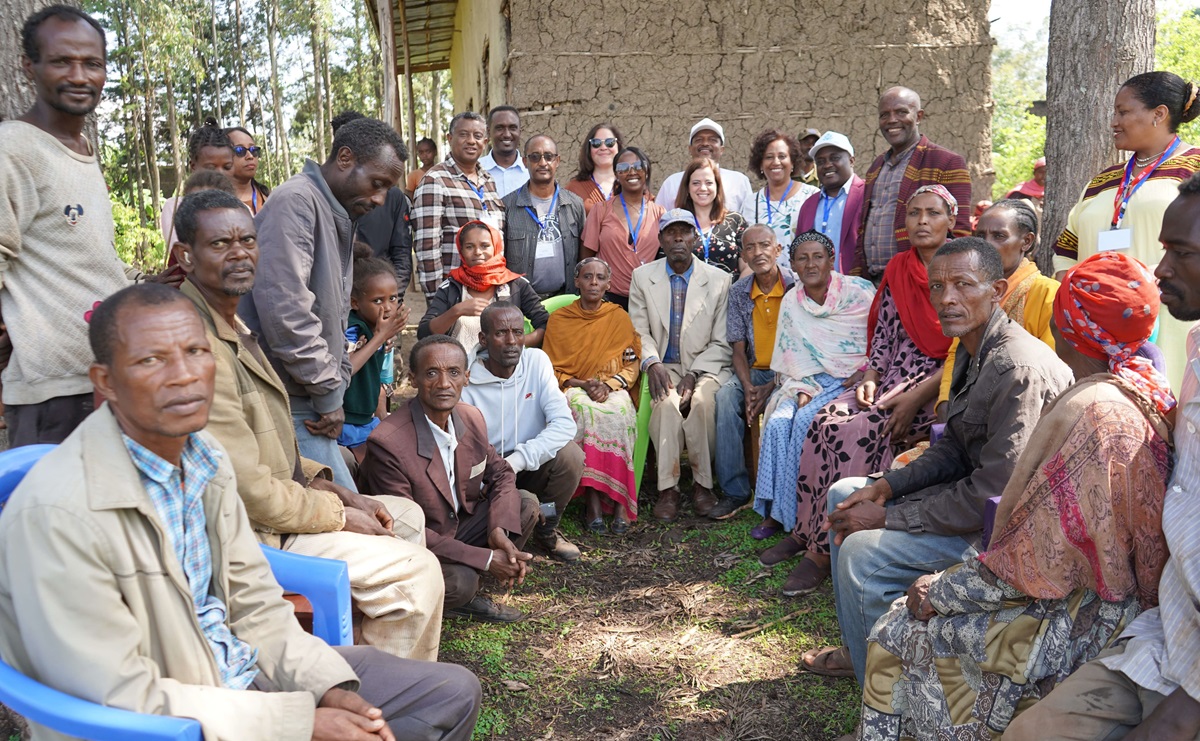Analysis: Ethiopian plant breeders turn to a nuclear technique to help Teff farmers adapt to climate change

Miklos Gaspar
Bishoftu, November 08/2019 – Teff may be an emerging super-food in the global arena – but this Ethiopian cereal crop may not be ‘super’ enough to withstand the consequences of climate change: less rain and strong winds.
Teff, a grass-like plant with tiny seeds, is the staple food for over 60 million people in Ethiopia and is the basis of traditional Ethiopian cuisine. As a naturally gluten-free grain, it is also gaining popularity among health-conscious customers in developed countries.
While it is very adaptive to the different climatic and soil conditions of the country, it has a low yield of only around 1.5 tons per hectare, less than half the average yield of maize in Ethiopia. And even this meager yield is under threat from decreasing rainfall and unpredictable weather, researchers say.
Plant breeders at the Debre Zeit Agriculture Research Centerin Bishoftu, an hour southeast of Addis Abeba, are turning to nuclear technology for help. Over the past three years, with the support of the IAEA, in cooperation with the Food and Agriculture Organization of the United Nations (FAO), they have been experimenting with using different doses of gamma irradiation to create new plant varieties with favorable traits: shorter stems that make it less susceptible to lodging, shorter maturity period, which would require less water, and higher yield and protein content.
“Unlike for most other crops, which are grown in several countries, for teff there is no global breeding community or international experience on what may be successful means to achieve desired varieties,” said Solomon Chanyalew, Director of the Center and a teff researcher himself.
In Ethiopia, teff is of utmost importance: it is grown on over 3 million hectares of land by 6 million smallholder farmers.
Chanyalew and his team have treated seeds of different cultivars with radiation doses of between 200 gray and 2000 gray– or between 10 and 100 million times more than a typical chest X-ray – to create the necessary genetic diversity to select for improved lines. The radiation induces changes in the DNA of the seeds, and some of the resulting lines will have favorable characteristics. Researchers are looking for the “sweet spot” of radiation level – just strong enough to change the characteristics of the plants but without killing them. This alteration is akin to what happens in natural mutation or traditional breeding selection and line crossing – but in a process that is sped up. Smaller seeds require much higher doses of radiation to create changes in their DNA.

They grow the new plants in tiny pots for three generations, and plant the fourth generation in an experimental plot of the institute. At this time, three years after the initial irradiation, variability starts to show. One line, which resulted from the irradiation of one of the cultivars with 1600 gray shows the most promising characteristics: it is shorter and matured 10 days earlier than the rest. It does not have a higher yield, but this can probably be achieved by crossing the new line with a cultivated variety with high yields, Chanyalew explained. This will happen next.
Developing a new plant variety is a slow and painstaking process – because researchers need to wait for the plants to grow and mature before seeing any results. When a new variety has been developed using irradiation, it takes additional time to multiply enough seeds for large-scale planting by farmers. Even in the best case scenario, new varieties can take around 6-8 years to develop, said Fatma Sarsu, a plant breeder and geneticist at the Joint FAO/IAEA Division of Nuclear Techniques in Food and Agriculture. Mutation breeding typically requires shorter time to develop improved varieties than traditional breeding.
Chanyalew hopes that after another couple of years of testing and crossing with the cultivated variety, new varieties will be ready for farmers to grow on their own fields in three to five years’ time.
The IAEA, through its technical cooperation program, has been supporting the institute for twenty years and the teff project for over three years, he said. This has included the participation in short courses by plant breeders and technicians, as well as an expert training staff of the institute on site. The irradiation are performed at another facility supported by the IAEA and FAO: the National Institute for the Control and Elimination of Tsetse and Trypanosomiasis, which is implementing a program to control tsetse flies, vectors of animal trypanosomiasis virus, following the area-wide integrated pest management approach, including the nuclear sterile insect technique as the final component. AS
__________________________________________//______________________________
Editor’s note: Miklos Gaspar is from IAEA Office of Public Information and Communication. The article first appeared here.







